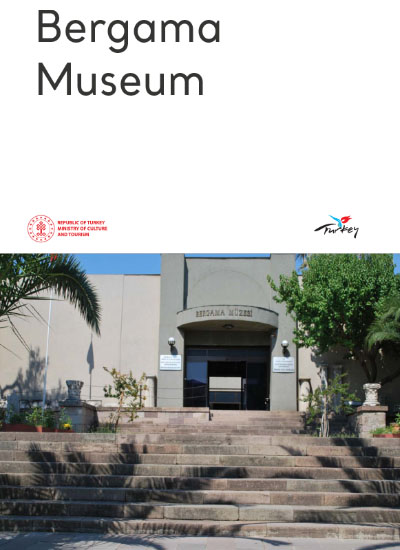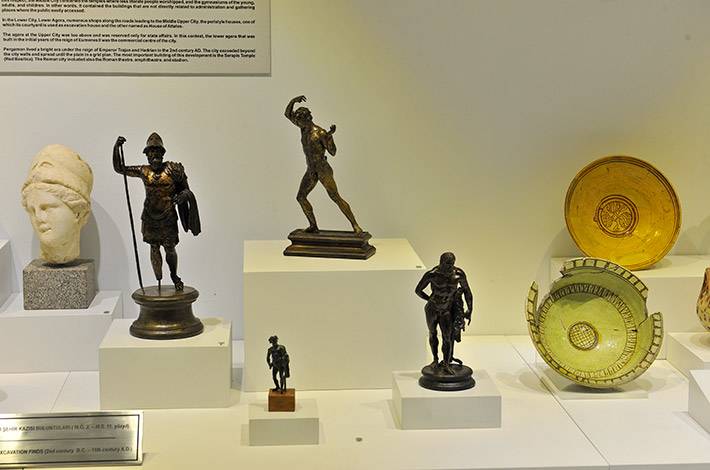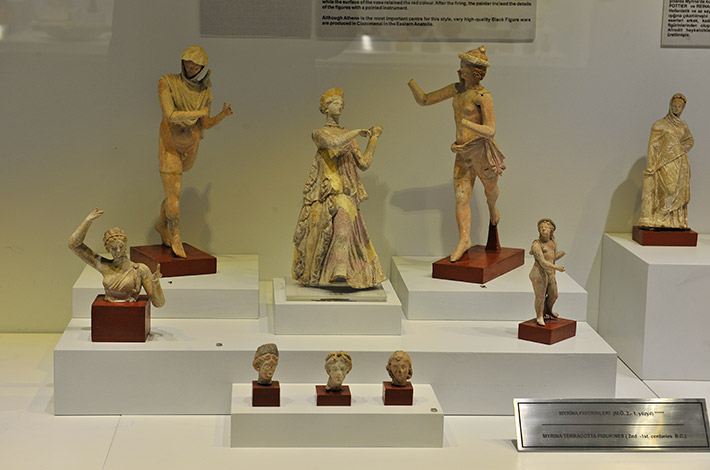Upon finding the high relief of Altar of Zeus in Pergamon, one of the oldest ancient cities discovered among the archaeological settlements in Anatolia, the first research began in 1865 inside the Byzantine Wall in the Acropolis. These works were turned into official excavations by A. Conze and C. Humann between 1878-86. After these excavations, a small depot museum was built in the garden of the excavation house to protect the artifacts unearthed during the day. The excavations were then carried out by W. Dörpheld, H. Hepding and P. Schatzwann in the Acropolis between 1900 and 1913.
The existing building was inadequate due to the increase in the number of artifacts from the excavations in Asclepion as well as from the excavations carried out in the Acropolis, and it was decided that a new museum building was needed.
In 1924, a number of the archaeological artifacts was transferred to the building in the city center which was used as a Community Center in 1934, and they were exhibited there. It opened the way to museology studies. In 1928, Osman Bayatlı was appointed as the director of this museum. In addition to the archaeological works, O. Bayatlı also included the ethnographic works that shed light on the culture and life in the region in the recent past.
Marshal Fevzi Çakmak visited Bergama in 1932 and instructed officials to establish a museum. Within the framework of Turkish-German cooperation and by the request of the Governor of Izmir Kazim Dirik the foundation of the museum was laid in an old cemetery area in 1933. The scope of the project was inspired by the Altar of Zeus and architects Bruno Meyer and Harold Hanson were assigned. The Bergama Museum, which was completed on October 30, 1936, was opened to visitors by Fazlı Güleç, the Governor of Izmir.
Most of the archaeological artifacts in the exhibition are from the excavations carried out in the area of the Acropolis, the Asklepion, the Red House (Serapeion) and the Musalla Cemetery. Besides, there are artifacts unearthed in excavations in Pitane (Çandarlı), Myrina (Güzelhisar), Gryneion (Yeni Şakran) antique cities in the vicinity of Bergama, salvage excavations at Kestel and Yortanlı (Allionai) Dam and the third-degree archaeological sites in Dikili Çandarlı District in Central Bergama. The chronology of the exhibition covers a long period of time starting from the Bronze Age until the end of the Ottoman period. The Bronze Age artifacts are composed of dishes, jars for daily use or for votive offering and Yortan plates and beak-rimmed dishes. Another remarkable group of works are; antique Pergamon-specific local productions, Megarian bowls, applique ceramics, Pergamon sigillatas, kerosene lamps, kistophor coins that were first minted in Pergamon.
In the ethnography section there is a rich collection of works reflecting the traditional social life and cultural values of Pergamon and its region. This important group of artifacts are composed of; local clothes of Yoruk, Turkmen and Çepni tribes of Pergamon region, bridal and casual clothing of Pergamon region, carpets, rugs, saddle bags of Yuntdağı, Kozak, Yağcıbedir regions of Pergamon, one of the important carpet production centers of Anatolia, and one of Bergama's well-known Zeybek Tuzcu Efe's personal clothes worn during the War of Independence.



